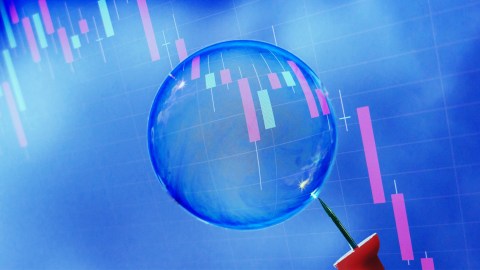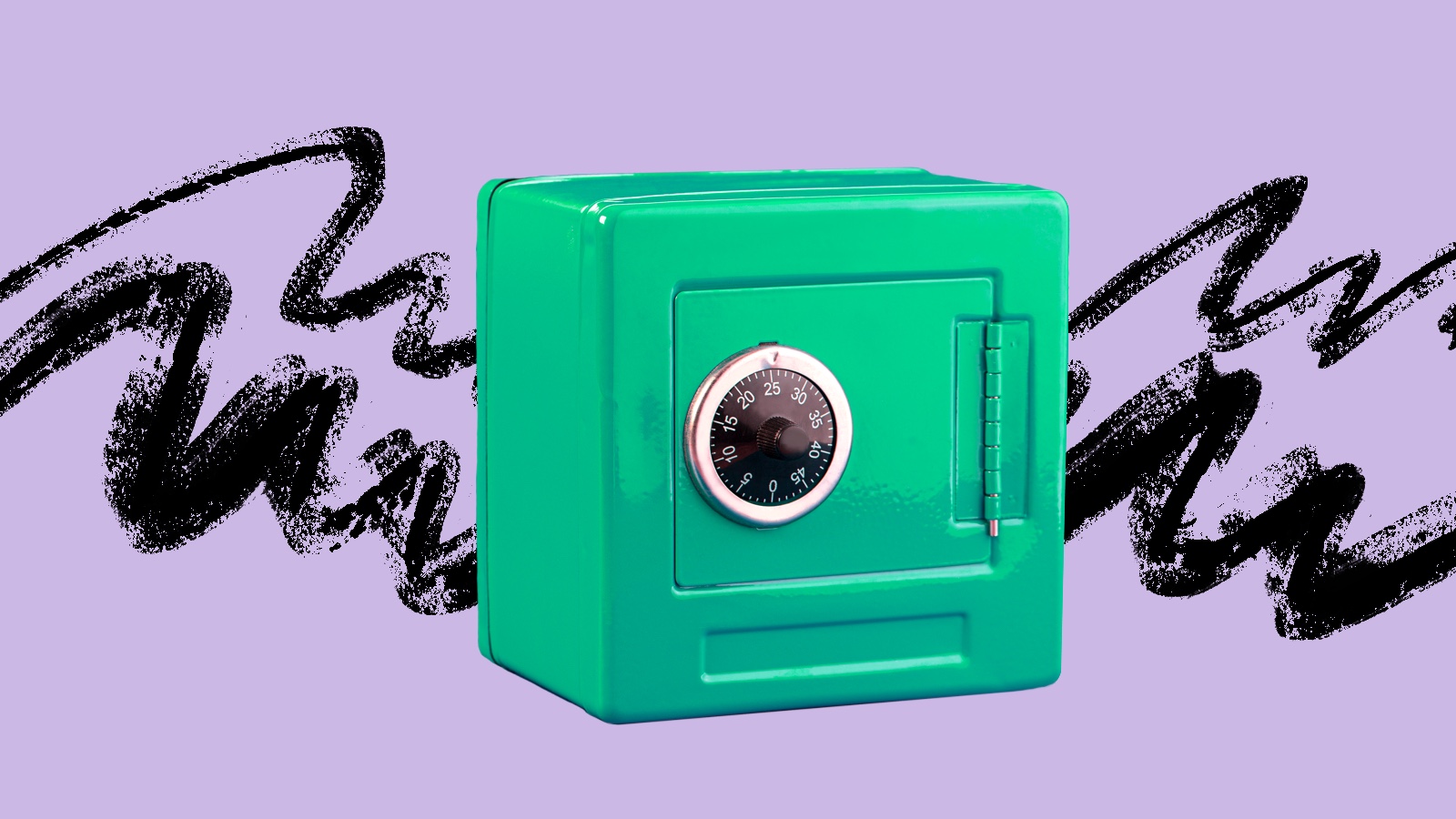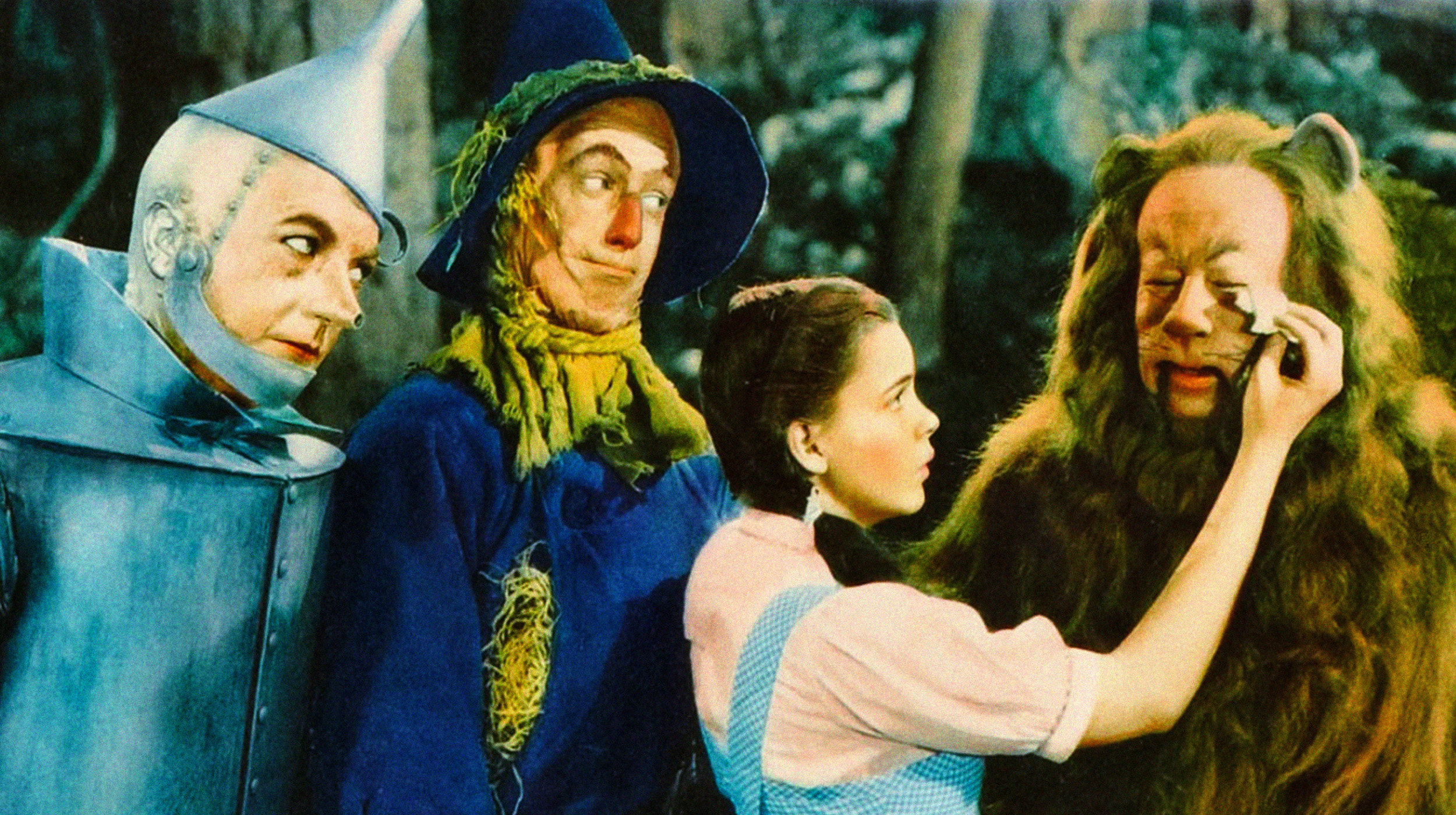How to spot an investment bubble before it’s too late

- An economic bubble occurs when an asset price increases rapidly then declines.
- Bubbles occur due to a combination of marketability, money invested, and speculation.
- Protect yourself by differentiating between intrinsic and speculative value.
The 21st century has already seen numerous economic bubbles, from the dot-com crash of the early 2000s to the 2015 Chinese stock market bubble. More recently, we’ve seen a lot of hype around concepts like tech, cryptocurrencies, and the metaverse that are now facing skepticism and dwindling interest. The stock of Meta, for example, lost more than half of its value in a crash that began in September 2021. Bitcoin took an even greater tumble this past year.
But are all these things necessarily bubbles? Besides, what even is a bubble, and why do they burst?
What is an economic bubble?
As Marc Chandler, Chief Market Strategist with Bannockburn Global, says: “There’s no truly clear definition of a bubble. The volatility of the market is so great, it’s difficult to give it a definition.”
But one definition of an economic bubble goes something like this: The market value of an asset increases rapidly, and then decreases rapidly. That means that although we can try to predict them ahead of time, a bubble can only be identified in retrospect.
History is full of examples. One of the most famous is the “tulip mania” of 17th-century Holland, where investors bought tulips at a rapid pace, driving up the price to extreme heights. Eventually, a single tulip cost 25 times the salary of a typical craftsman. But as your local florist could tell you, this didn’t last forever, and many investors lost fortunes.
Why do economic bubbles form?
Extreme cases like tulip mania make bubbles sound irrational and unpredictable, and they certainly can be. But moderate bubbles are a normal part of the economic cycle (also known as the boom and bust cycle). The economy always experiences a period of rising prices followed by a time of dropping prices, both of which are fluctuations from an equilibrium that keeps everything stable.
According to the economist Hyman P. Minsky’s 1986 book “Stabilizing an Unstable Economy,” a bubble involves five stages:
- Displacement: When a profitable opportunity piques the interest of investors.
- Boom: When these investors start to push prices up of assets related to that opportunity, causing others to get involved.
- Euphoria: Prices reach their ultimate high.
- Profit-taking: Warning signs that the bubble is about to burst.
- Panic: Prices finally begin to decline, and the bubble bursts.
In their fifth stage, bubbles can cause economic crises and destroy the wealth of those affected. As a result of the dot-com crash, the NASDAQ Composite index fell 75% between March 2000 and October 2002. This caused a shallow recession for the rest of the U.S. economy.
Investors who had put outrageous sums of money into domains like “pets.com” (which were believed to have value due to their names but had no business models to drive them) lost big. Some calculations suggest that investors had lost around $5 trillion by 2002.
Why do bubbles always burst?
The analysis we’ve given above is our first clue as to why bubbles burst, but let’s take a closer look. Many economists opt for one of the following explanations:
- The irrational behavior of investors encourages them to invest in worthless assets
- A herd mentality makes people copy others by investing in worthless assets
When people are investing in something with little to no value, it’s only a matter of time before the penny drops and the price plummets.
One of the most comprehensive examinations is William Quinn and John Turner’s “Boom and Bust,” which explores the most significant financial bubbles over the past 300 years.
The authors propose a “bubble triangle explanation.” Just as oxygen, heat, and fuel form the “fire triangle,” they suggest that financial bubbles require three components:
- Marketability: An asset that can be marketed.
- Money or credit: People putting money into the asset.
- Speculation: Buzz and hype surrounding the asset.
These three elements go into motion after a “spark” in the form of either technological innovation or government policy. For example, in the case of the dot-com bubble, the new technology of the internet was the spark that enabled the marketability, money, and speculation surrounding up-and-coming internet companies.
It’s important to note that the signs above don’t necessarily point to a bubble waiting to burst. Google and Yahoo were both created around the time of the dot-com bubble, and look where they are today — the crucial difference was that their business models offered genuine value.
How to protect yourself from bubbles
It’s easy enough to identify and understand a bubble in retrospect, but it’s a lot more difficult to know when you’re living through one, and how to protect yourself in the moment.
Warren Buffett gave this advice: “Be fearful when others are greedy, and greedy when others are fearful.”
In other words, try not to mindlessly buy into the hype about the Next Big Thing. It might seem like a new company is “the future” and that its continuous price increases will last forever, but this could simply be the euphoria stage of the boom-and-bust cycle.
“Not enough people focus on risk management,” says Chandler. “Stick to the tried and true principles of value investing. Buy below fair market value and be disciplined and diversify investments.”
If a price is increasing quickly, this alone is cause to be wary. And if those price rises also come accompanied by excessively optimistic predictions about an asset or industry — and greed about the profits lying ahead — that’s an even bigger indication that you could be living through a bubble.
A useful rule of thumb is to ask yourself how much intrinsic value something has beyond its speculative value — is it valuable because lots of people are saying it’s valuable, or because it has a valuable use case? In the case of a house, even if there’s a lot of hype around property and the market shows some characteristics of a bubble, you ultimately know you’ll be able to live in a house, which is a basic human need. As a result, it can’t possibly be worthless.
“Understand the risk,” Chandler says. “What’s the real risk? Make sure you put cash aside before investing in anything, then focus on large cap stocks, then small cap, and only then emerging markets. Know what you’re really investing in and make sure there are stop orders and stop losses. There’s no quick road when it comes to investing.”
Keep your head
Bubbles might be a natural fixture of economic cycles, but they can do serious damage — both to individual investors and the economy as a whole. If you want to avoid getting swept up, remember to keep your critical thinking cap on when you hear everyone raving about the latest investment craze sweeping the nation.





